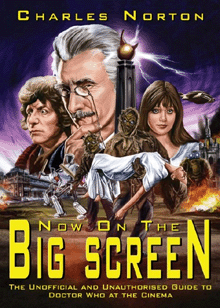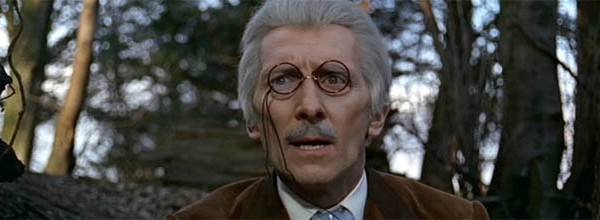Billed as The Unofficial and Unauthorised Guide to Doctor Who at the Cinema, Charles Norton’s book is clearly a game of two halves. Firstly the 1960’s Dalek movies and secondly the slew of abortive projects conceived in the years since.
The Cushing films appeared while Hartnell was still the black and white, small-screen Doctor. The first rode a Technicolor wave of Dalekmania that swept the nation’s school playgrounds. The second, promptly commissioned to capitalise on the success, enjoyed a more modest run at the box office.
 Every element of these two remarkable productions is chronicled, with a focus on the unique character of their American writer and producer Milton Subotksy. Norton looks at the public reaction to the films which were critically panned but nonetheless entranced a generation of schoolchildren.
Every element of these two remarkable productions is chronicled, with a focus on the unique character of their American writer and producer Milton Subotksy. Norton looks at the public reaction to the films which were critically panned but nonetheless entranced a generation of schoolchildren.
He also looks at the radio series pilot recorded by Cushing from a Malcolm Hulke script, predating the writer’s TV stories. The Dalekmania documentary is covered too, created by Kevin Davies to celebrate the films on their 30th anniversary.
After this we enter the realm of the almost, nearly and never-was. One of the lesser known is Mervyn Haisman’s attempts to adapt the storyline of ‘The Abominable Snowmen’. His remarkable solution to avoid copyright? Replace the Doctor with Sir Arthur Conan Doyle’s Professor Challenger.
While Tom Baker and Ian Marter’s plans for ‘Doctor Who meets Scratchman’ and Douglas Adams ‘Doctor Who and the Krikkitmen’ have been well documented elsewhere, it is the repeated attempts in the late 80’s/early 90’s that truly fascinate. We follow the project by Greenlight/Daltenreys/Coast to Coast/Lumière through various iterations.
Storylines by Mark Ezra, Johnny Byrne and Hollywood scribe Denny Martin Flynn are presented and it is fascinating to see just how close to production they finally came. There is plenty of insight provided into how the BBC did (and didn’t) work towards supporting these projects too.
We must admit we had some concerns that there was enough material to justify a book here but, in fact, this is an eye-opening tale of paths not taken. While some have been covered before, notably in Jean-Marc Lofficier’s 1997 book The Nth Doctor, Norton provides exhaustive annotation and plenty of humour throughout – he cannot resist aping Douglas Adams when discussing his work. For completion’s sake, he also provides an appendix covering straight to video projects such as Downtime, Auton and Mark Gatiss’ P.R.O.B.E. series.
We cannot help but wonder about the ramifications, had one of these movies being produced. Might film success have stymied a television revival or provide added impetus? Personally, we would not trade Eccleston, Tennant and Smith for a big screen outing and yet, well cast and lovingly made, a Doctor Who film remains a tantalising proposition.
![]()
Published on 31 May 2013 by Telos Publishing.
What did you think of the book? Let us know below…

